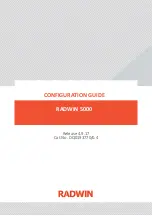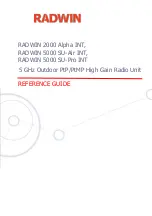
COM: MHz/KHz CHANNEL SELECT KNOBS
Both these controls allow for continuous CW or CCW rotation. MHz frequency
readout, in Standby display, changes at a rate of 1 MHz per detent. Rotation of the
KHz knob steps the Standby frequency readout at a change rate of 25 KHz per detent.
Clockwise rotation increments the frequency, counterclockwise decrements the
frequency.
COM: HOW TO ENTER A FREQUENCY
All frequencies entered into the COM Section enter via the Standby route, that is, the
frequency is entered (see in the Standby displays) and then transferred to the Active
by depressing the "arrowed" transfer push button. The next frequency entered is the
Standby frequency.
The Active frequency and its resultant data is not affected by the rotation of either of
the MHz or KHz knobs.
COM: TRANSFER
Pressing this white arrowed momentary switch "flips" the display. The Standby
frequency becomes the Active and the Active becomes the Standby. A second
depression exchanges the frequencies.
2.9.2 NAV Section Operation
NAV: DISPLAY
The left side of the display identifies the NAV Active communications frequency.
The right side of the display identifies the NAV Standby frequency.
NAV: VOL-PULL IDENT
VOL, continued clockwise rotation increases the NAV audio volume.
NOTE: NAV AND COM SHARE THE AUDIO 50 mw OUTPUT.
PULL IDENT when pulled activates the IDENT circuit.
NAV: MHz/KHz CHANNEL SELECT KNOBS
Both these controls allow for continuous CW or CCW rotation. MHz frequency
readout, in Standby display, changes at a rate of 1 MHz per detent. Rotation of the
KHz Knob steps the Standby frequency readout at a change rate of 50 KHz per detent
Clockwise rotation increments the frequency, counterclockwise decrements the
frequency.
JUNE 1996
REV. C
11





































